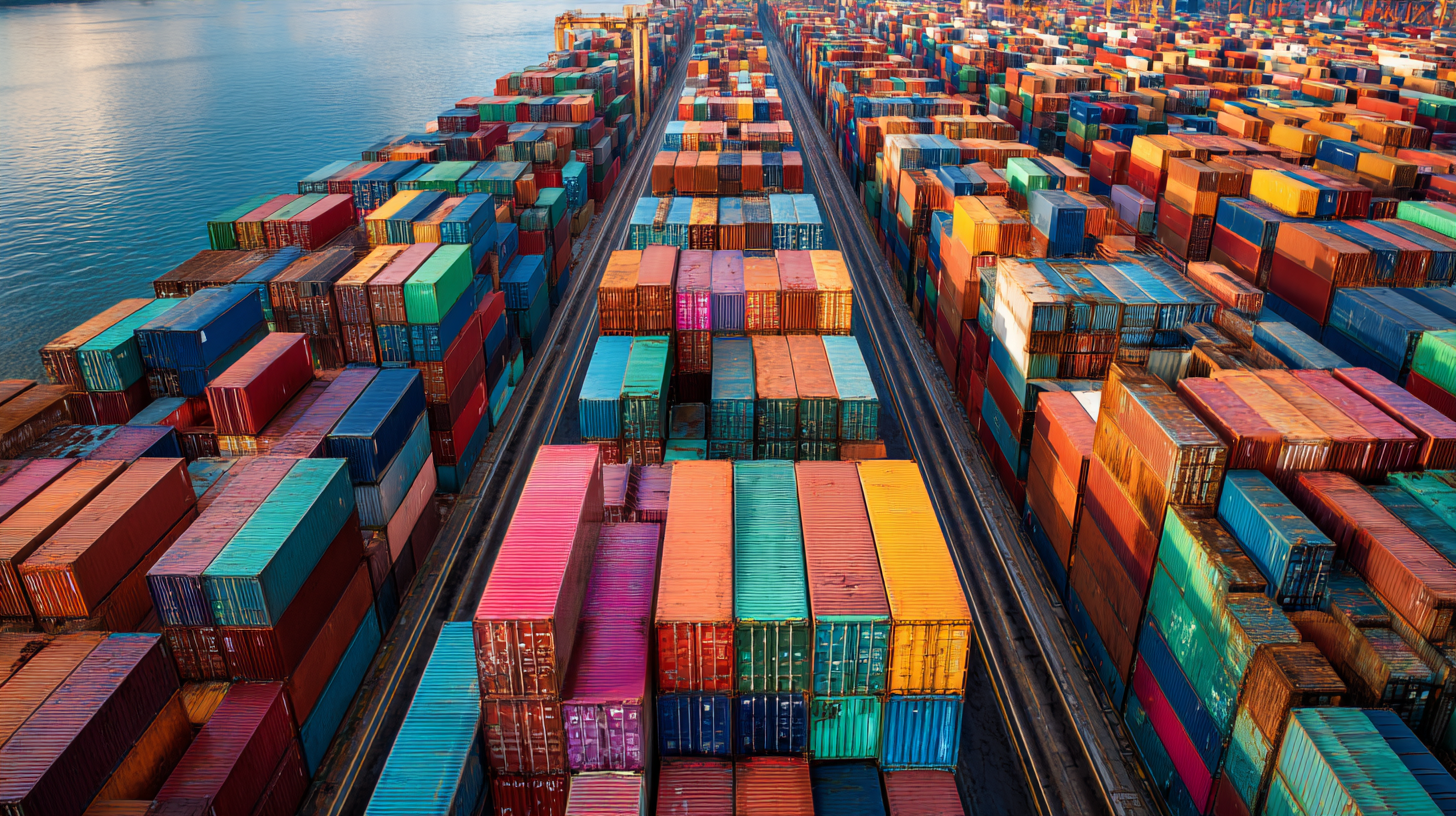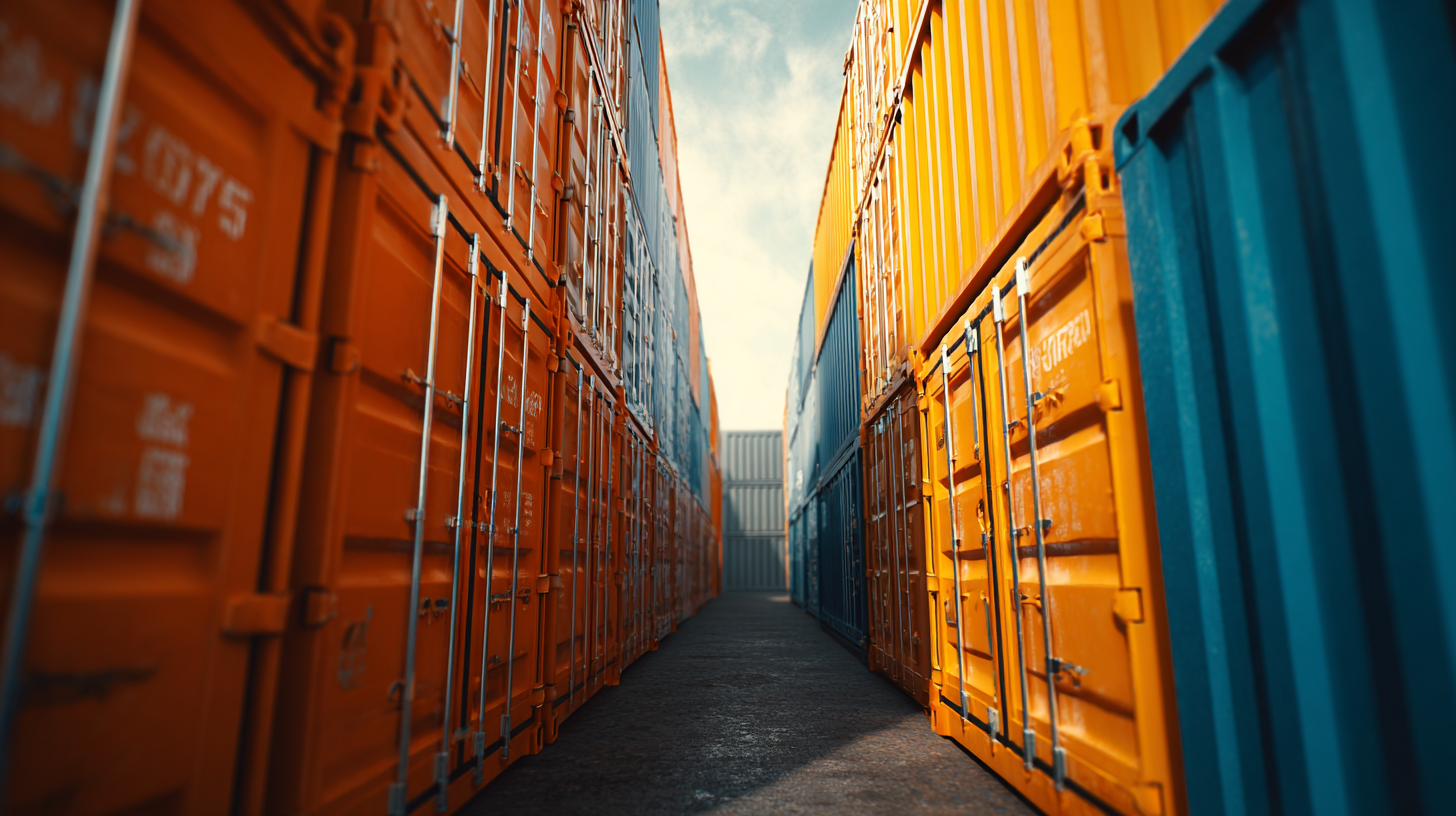12 Exceptional Container Packaging Solutions for Global Buyers
In today's global marketplace, the significance of innovative container packaging cannot be overstated. As businesses strive to meet the diverse needs of consumers worldwide, the demand for exceptional packaging solutions has surged. Our article explores 12 outstanding container packaging solutions that exemplify the fusion of world-class manufacturing and China's esteemed export capabilities. These solutions not only enhance the aesthetic appeal of products but also ensure durability and sustainability, crucial factors for international buyers. By focusing on the latest trends and technologies in container packaging, we aim to equip global purchasers with insights that can enhance their brand's visibility and customer satisfaction.

Join us as we delve into the artistry and engineering behind container packaging that sets the standard for excellence in the global market.
Innovative Sustainable Materials Transforming Container Packaging Solutions
The global packaging industry is witnessing a paradigm shift, particularly in the realm of container packaging solutions driven by innovative sustainable materials. The rapid consumer goods (FMCG) packaging market is projected to surge to a staggering $823.83 billion in 2024, soaring to $1.34 trillion by 2032, with a steady growth rate of 6.28%. This growth is fueled by increasing consumer awareness and demand for eco-friendly packaging options, propelling manufacturers to rethink and redesign their packaging strategies.
Sustainable materials such as recycled plastics, biodegradable substances, and eco-conscious paper products are becoming increasingly pivotal in the packaging sector. For instance, the recycled plastic packaging market alone is expected to exceed $27.76 billion by 2023, showcasing a robust compound annual growth rate of approximately 10% through 2032. As businesses aim to minimize their environmental footprint, the adoption of these innovative materials across various sectors, including dairy and food services, is advancing rapidly. The trend not only aligns with consumer preferences but also supports regulatory mandates for sustainability, reflecting a broader commitment to protecting our planet.
12 Exceptional Container Packaging Solutions for Global Buyers
| Solution Type | Material Used | Sustainability Feature | Target Market | Key Benefits |
|---|---|---|---|---|
| Biodegradable Boxes | PLA (Polylactic Acid) | Compostable | Food Products | Eco-friendly, reduces landfill waste |
| Recycled Paperboard | Post-consumer waste | Recyclable | Cosmetics and Personal Care | Cost-effective, less environmental impact |
| Glass Containers | Recycled Glass | Reusable | Beverage and Food | Preserves flavor, infinite recyclability |
| Bioplastics | Starch-based materials | Bio-based | Exotic Foods | Customizable, lightweight |
| Corrugated Containers | Recycled Paper | Sustainable forestry | E-commerce | Durability, lightweight |
| Reusable Totes | Cotton or Jute | Biodegradable | Retail | Fashionable, long-lasting |
| Aluminum Cans | Recyclable Aluminum | Energy-efficient recycling | Beverages | Protection against light and oxygen |
| Sustainable Shrink Wrap | Bio-based Polyethylene | Renewable resources | Various Products | Lightweight, effective protection |
| Innovative Textile Packaging | Recycled Fabrics | Reusability | Apparel | Stylish, functional |
| Plant-based Foam | Soy or Corn-based | Bio-based | Electronics | Excellent cushioning, eco-friendly |
| Water-soluble Pouches | Polyvinyl Alcohol (PVA) | Water-soluble | Detergents and Cleaning Products | No waste, easy disposal |
Emerging Trends in Smart Packaging Technologies for Enhanced Product Tracking
In today's fast-paced global market, the integration of smart packaging technologies is transforming the way products are tracked and managed throughout the supply chain. As companies seek to enhance transparency and improve operational efficiency, innovative solutions like RFID tags, QR codes, and IoT-connected devices are emerging as essential tools. These technologies not only enable real-time tracking but also provide valuable data analytics that can inform inventory management and customer engagement strategies.
Tip: When adopting smart packaging solutions, consider the compatibility of these technologies with your existing logistics systems. This ensures a smoother implementation and better utilization of data collected through smart packaging.
Moreover, consumer preferences are shifting towards transparency, prompting brands to leverage smart packaging to share product information and sustainability efforts. Packaging that integrates technology such as near-field communication (NFC) allows consumers to engage with the product directly, accessing details about its origin, production process, and environmental impact.
Tip: Engage your customers by incorporating interactive elements into your packaging. Allowing them to scan codes or use apps can create a more personalized experience and foster brand loyalty.

Cost-Effective Packaging Strategies That Drive Supply Chain Efficiency
In today's competitive marketplace, cost-effective packaging solutions are essential for driving supply chain efficiency. By optimizing packaging design and materials, businesses can reduce shipping costs and minimize waste, leading to a more sustainable operation. Strategies like using lightweight materials and modular designs can not only lower transportation expenses but also allow for versatile use, making it easier to adapt to varying product needs.
Moreover, advanced technologies like smart packaging can enhance visibility throughout the supply chain. Implementing barcodes and RFID tags helps in tracking products in real time, ensuring that businesses can respond quickly to inventory demands and minimize lead times. By investing in innovative packaging solutions, global buyers can streamline their processes, make informed decisions, and ultimately improve their bottom line. These strategies not only meet the needs of modern logistics but also create a more efficient and responsible supply chain.
Container Packaging Solutions Cost-Effectiveness
This chart illustrates the cost-effectiveness scores of various container packaging solutions. Scores range from 1 to 10, with higher numbers indicating greater cost efficiency for global buyers looking to enhance their supply chain performance.
Impact of E-commerce Growth on Container Packaging Design and Functionality
The exponential growth of e-commerce has significantly influenced container packaging design and functionality. According to a recent report by Statista, global e-commerce sales reached approximately $4.28 trillion in 2020 and are projected to grow to about $5.4 trillion by 2022. This surge in online shopping has prompted companies to rethink their packaging strategies to ensure products arrive in pristine condition while balancing sustainability and cost-efficiency. Innovative packaging solutions not only protect items during transit but also enhance customer experience through aesthetics and ease of use.

Moreover, research by the Paper and Packaging Board indicates that 60% of consumers have a positive perception of a brand when they receive well-packaged goods. As a result, businesses are investing in smart packaging technologies that include recyclable materials, reusable designs, and tamper-evident features. This shift not only meets consumer expectations but also aligns with growing environmental concerns, as 74% of consumers are willing to pay more for sustainable packaging options. Thus, it is evident that the interplay between e-commerce growth and container packaging is reshaping the landscape of product delivery and brand perception.
Future of Biodegradable Container Solutions in Meeting Environmental Regulations
Increasing environmental regulations and consumer demand for sustainable options are driving innovations in
biodegradable container solutions. A report by The Freedonia Group indicates that the global biodegradable packaging market is expected to reach
$12.4 billion by 2024, reflecting a
14% annual growth rate. This surge is fueled by new manufacturing technologies and the development of materials like
polylactic acid (PLA) and
polyhydroxyalkanoates (PHA), which offer viable alternatives to traditional plastics. As companies seek compliance with stringent environmental laws, investing in biodegradable options is not just a trend—it's becoming a necessity.
To successfully transition to biodegradable packaging, businesses should consider a few tips. First, evaluate the lifecycle of your packaging: understand the environmental impact from production to disposal. Secondly, engage with suppliers who prioritize sustainable practices, ensuring that your materials meet both quality and regulatory standards.
Lastly, educate consumers about the benefits of biodegradable options through transparent communication, which can enhance brand loyalty and appeal in today’s
eco-conscious market. Embracing these approaches can position companies at the forefront of the packaging revolution while adhering to environmental priorities.
